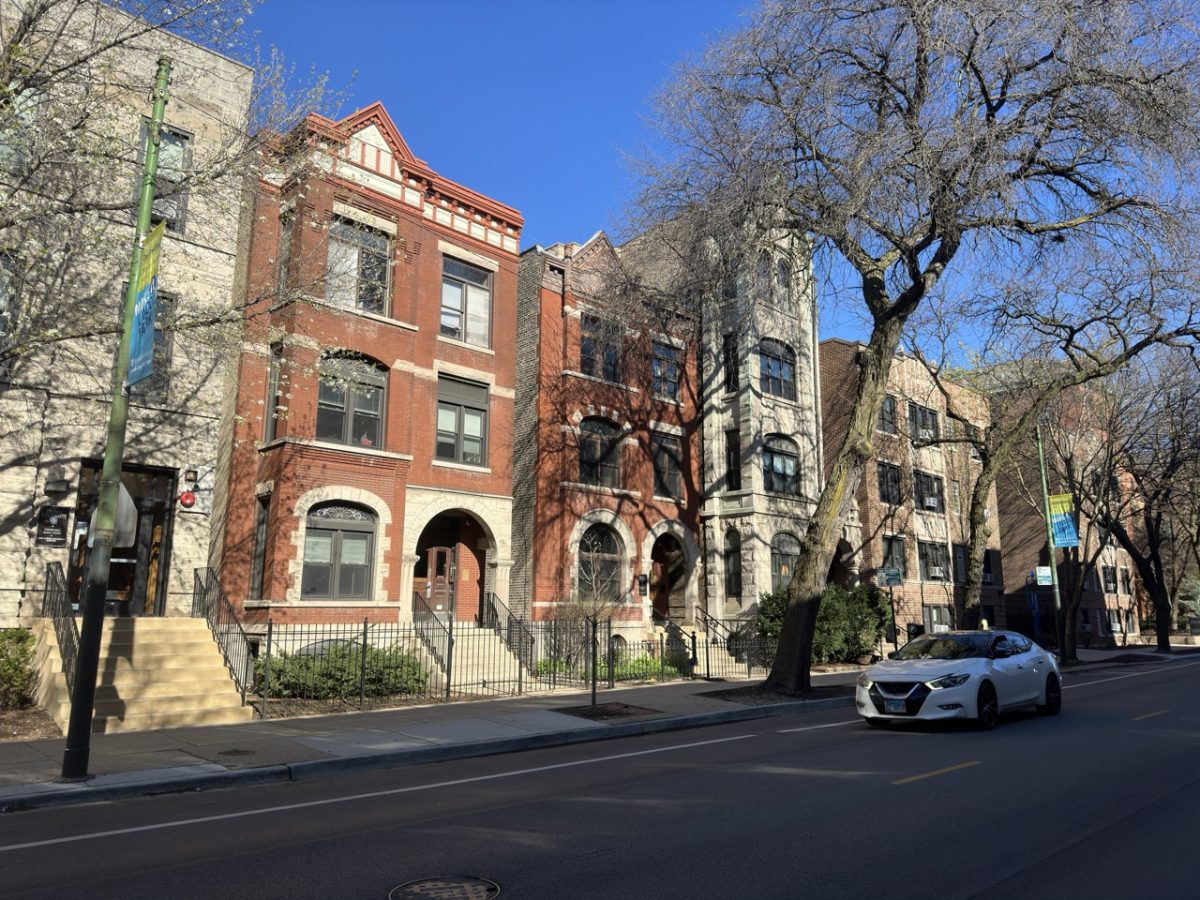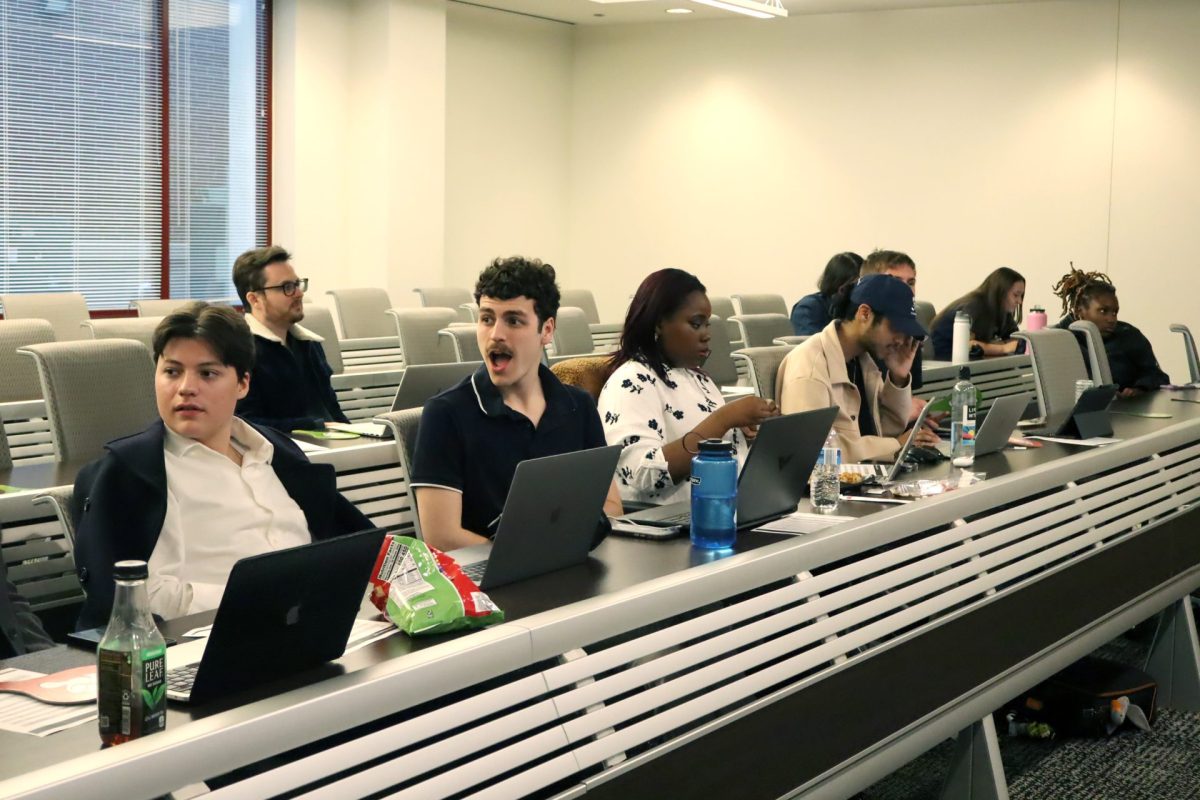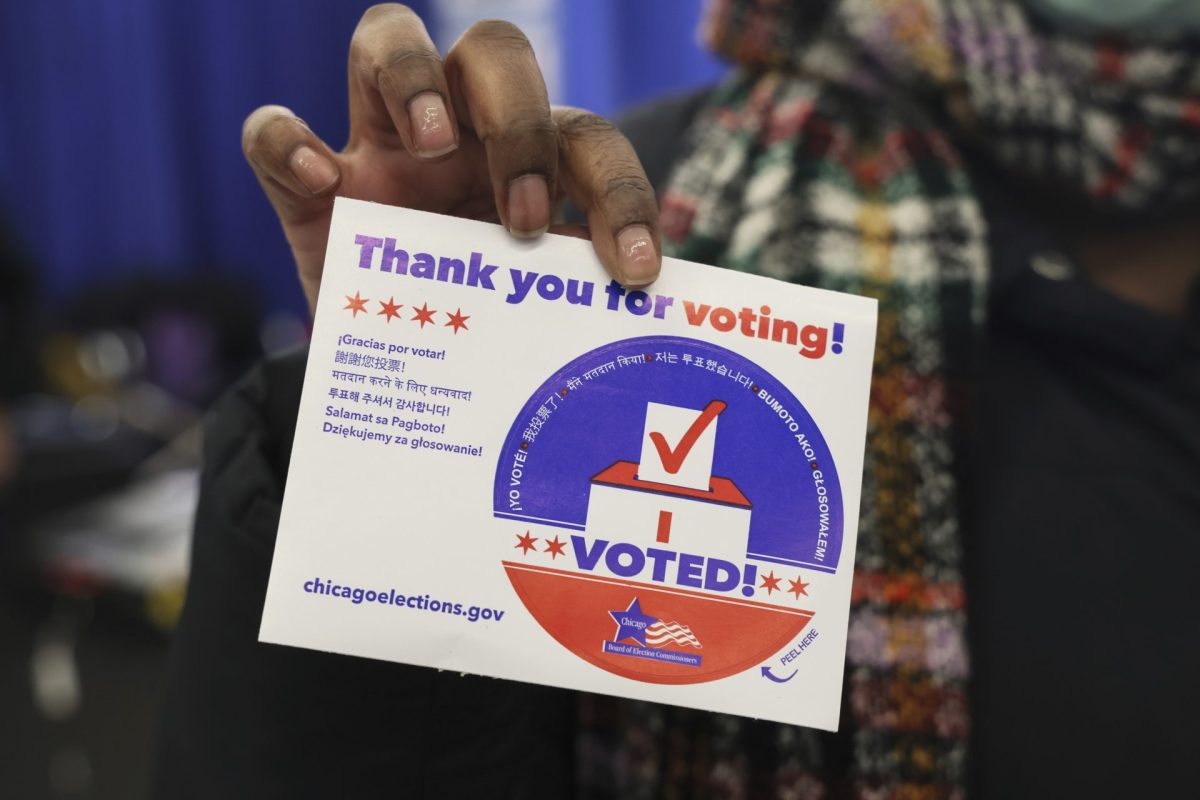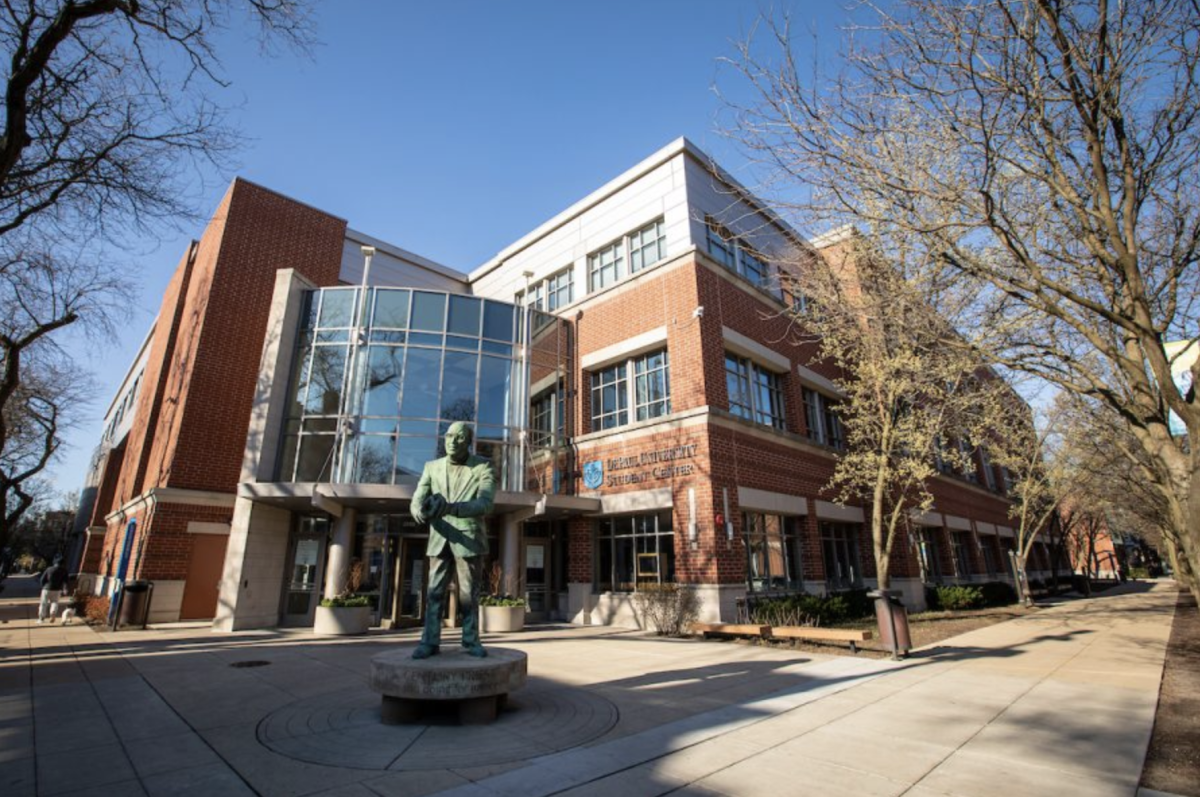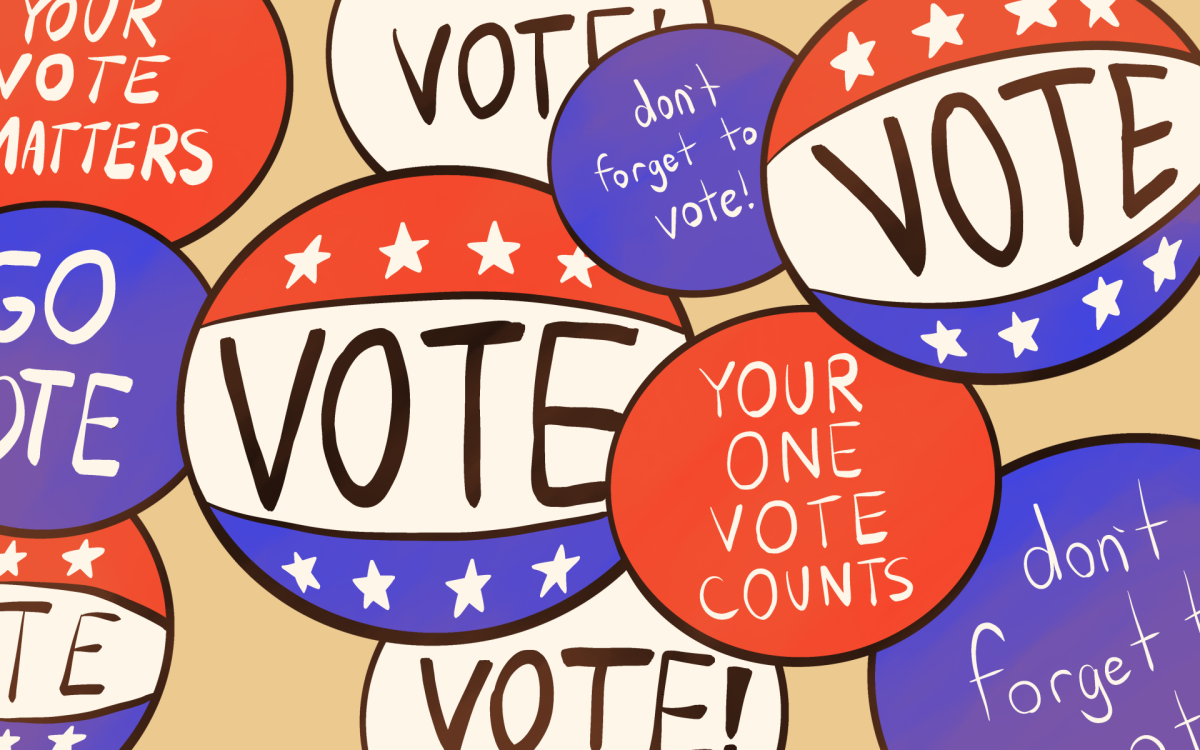
Decision time is now for many prospective DePaul students. While choosing a college is a big decision for a high school senior, there is a lot of work that goes into getting a student to be #depaulbound.
A big part of any university’s identity comes not from an organic process, but intentional branding. DePaul’s brand focuses on respected academics, real-world knowledge, multicultural experiences and social responsibility. The undergraduate brand also specifically promotes engaged learning and being in a world-class city. In the language used in promotional materials, this translates to small classes, instructors with professional experience, diversity, Catholic values and using the city as the classroom. The Division of Enrollment Management and Marketing (EMM) website describes DePaul’s character as “Catholic, urban and Vincentian.” Just as with any product, the university has to advertise in order to get consumers to pick DePaul.
Mikey Mayers, a freshman finance major, said that last year at this time, he was choosing between a Big Ten school and DePaul. Since he grew up in the Chicago area, Mayers was initially reluctant to stay close to home.
“Chicago being the classroom was one of the reasons that I decided to stay in my home area,” Mayers said. “The university is more integrated with the city.”
Jessica Le, a freshman economics major, moved to Chicago from Texas. She is very pleased with her “city as the classroom” experience so far.
“As a freshman, I have an internship, I’m part of clubs and I have a foot in the door to what I want to do,” she said. The urban setting combined with small classes gives “both a small and big feel” to DePaul, Le said.
However, some DePaul students find fault with the rosy picture social media — and branding campaigns — can paint.
Senior Max Radakovitz, a public relations major, said the city as the classroom image is what sold him on DePaul, but he found that his experience did not quite live up to the image of a vibrant city school.
“I found the whole campus life to be very un-stimulating and boring,” Radakovitz said. “When I came to DePaul, they sold me on the idea that the city was your playground and that I’d make friends and go out to the city with my friends and do all kinds of fun stuff on campus. I found none of that.”
Though the quality of his education has been excellent, Radakovitz said that DePaul did not do a great job of integrating student life with the city.
“I’ve got plenty of friends who go to DePaul, but I only met a couple of them because of DePaul,” Radakovitz said.
DePaul also advertises flexible campus locations, making it sound as though a student can pick between the Loop and Lincoln Park campuses. In reality, where a student takes classes is largely determined by their degree program. For example, only eight business classes are offered in Lincoln Park this upcoming fall quarter, compared with 334 offered in the Loop.
Enrollment Management and Marketing declined to comment for this article.
Given the prevalence of social media in young people’s lives, it makes sense for DePaul to use social media as a tool attract incoming freshman. DePaul has official accounts on Facebook, Twitter, Instagram and Tumblr. Each has a slightly different angle that works with the platform. The Facebook account focuses mainly on current events at DePaul. The Tumblr account is aimed at incoming freshman with pictures of life in Chicago and at DePaul. The hashtag
#depaulbound has been used 418 times on Instagram.
Mayers, Le and Spencer Csonka, a freshman finance major, all agreed that the Facebook group for DePaul’s class of 2018 was the most influential for them.
“The Facebook group helped me out,” Csonka said. “I got a lot of good info. I met Mikey because of that.”
For Janet Evans, a DePaul instructor in social media, it makes sense that potential students look to Facebook groups to help inform their decisions. It is a way for them to feel out the community ahead of time, she said.
“Facebook is really about community — it’s a digital town square,” Evans said. “If you think about incoming freshman, it’s a huge milestone. You are connecting with the people you have a shared experience with.”
For Mayers, the Facebook page for his graduating class also provided good information.
“The big difference was the faculty and staff that posted to give more accurate information than the rumors that float around,” he said.
Evans said that it’s important for universities to use social media.
“The students are the ones building the future Facebook or Google,” she said. “Universities have to be at the forefront of social media because the students already know it, there’s no learning curve.”
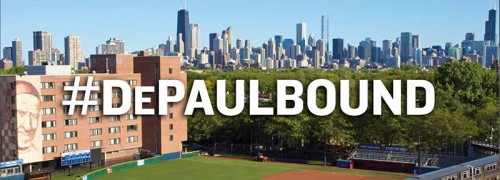
One of the newer ways DePaul is utilizing social media is with the Instagram account “I Am DePaul.” Each week a different student runs the account to give a glimpse of what life at DePaul is like. The students are carefully diverse in race, gender and major. The account has just over 2,000 followers.
“Any communication channel has to reinforce who DePaul is,” Evans said.
The “I Am DePaul” account does just that. The students featured participate in charitable activities, Chicago life and DePaul events of all types. They are the poster children for the “Catholic, urban and Vincentian” image the university wants to communicate.
Torrence Stagger, a former DePaul student, said he found that DePaul came up short on the promise of diversity.
He said that in a city as diverse as Chicago, he expected more diversity in the classroom. In Chicago, nearly one third of the population is black, while less than 10 percent of DePaul’s students are. Similarly, nearly 30 percent of Chicago’s population is Hispanic/Latino, but that number is less than 20 percent at DePaul.
“In most of my classes while I attended I was pretty much the only person of color, except for an African American studies class and my first Discover class,” Stagger said.
Both Stagger and Radakovitz said social media played no part in their decision to attend DePaul.
In 2014, DePaul accepted 70 percent of applicants and of those applicants, 19 percent accepted DePaul. On May 1, whether through effective branding and social media or not, around 2,500 students committed to being DePaul’s class of 2019.


